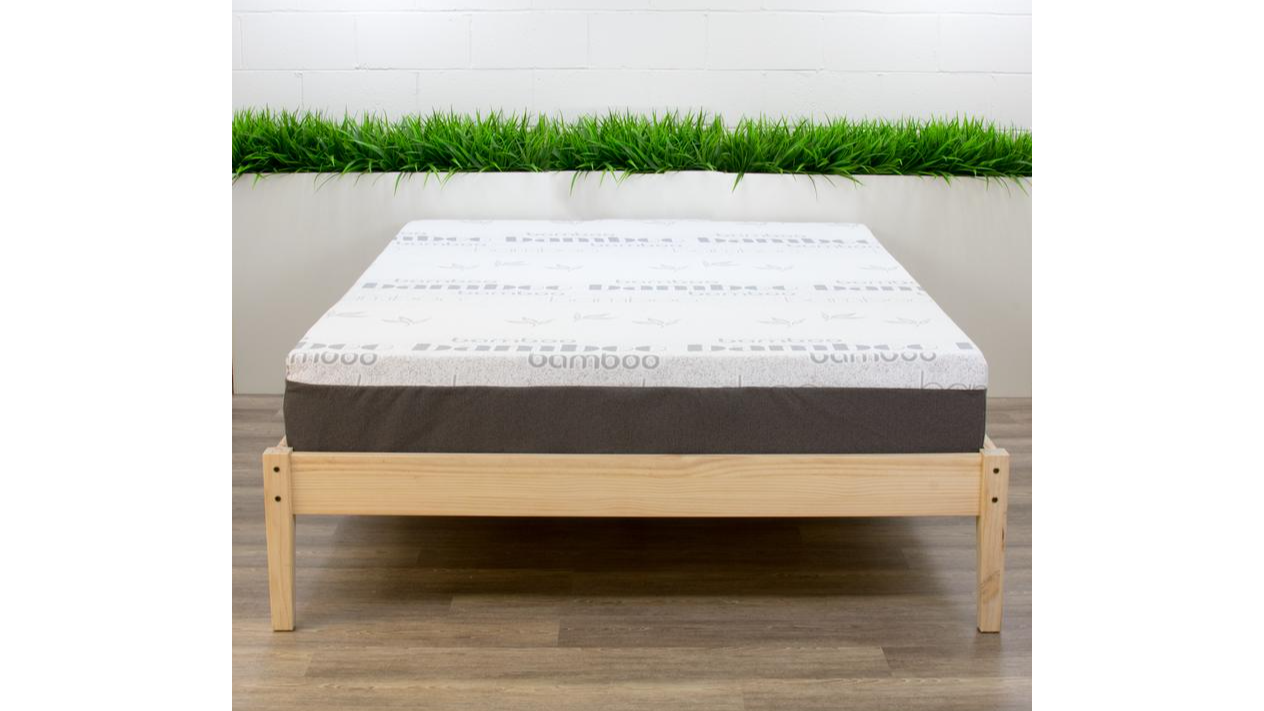Canadians looking to improve their sleep can choose between a cost-effective latex topper or a full mattress upgrade. This blog compares both options to help you decide what fits best for comfort, budget, and sustainability.

If your wooden bed frame is still sturdy but your sleep quality has taken a nosedive, you’re likely stuck between two choices: invest in a brand-new mattress or try a more affordable fix like a mattress topper. It's a common dilemma facing Canadians who want better rest without draining their savings.
This blog explores the pros and cons of each option — a mattress topper versus a full mattress replacement — specifically in the context of solid wood bed frames. We’ll break down the cost, comfort, longevity, and practical considerations so you can make an informed decision tailored to your sleep needs.
Before choosing between a topper or a mattress, it’s worth considering how your bed frame factors into the decision.
Wooden bed frames — especially platform styles — provide strong, even support that can accommodate a wide range of mattresses and toppers. A solid platform eliminates the need for a box spring and ensures any sleep surface placed on top is properly supported.
However, older wooden frames with slats spaced too far apart might not work well with some foam toppers or thinner mattresses. In those cases, a bunkie board or slat upgrade might be needed to ensure the sleep surface stays supportive and stable.
If your bed frame is in good shape and offers even support, either a topper or a new mattress can work effectively. But your choice should depend on what’s actually wrong with your current sleep setup.
A quality mattress topper can work wonders — but only if your existing mattress is structurally sound. If your mattress has mild sagging (under 1.5 inches), is too firm, or has lost its surface comfort over time, a topper is a cost-effective way to breathe new life into it.
Latex toppers, in particular, are a popular choice in Canada due to their durability, breathability, and resilience. A 3-inch natural latex topper from a company like MFC can mimic many of the comfort features of a new latex mattress at roughly one-fifth the price.
No topper in the world will fix a mattress with major sagging, broken springs, or years of wear. If your current mattress is over 8–10 years old and you regularly wake up with back pain, it might be time for a full replacement.
While mattresses cost more upfront — with quality Canadian models ranging from $800 to $3,000 — they offer a complete reset. If your current sleep surface is causing long-term discomfort, that cost may be justified.
When choosing a new mattress for a wooden bed frame, look for one that pairs well with your existing support system. Latex, hybrid, and memory foam mattresses work best on slatted or platform-style frames, while innerspring models may require added support.
In many parts of Canada, sleep comfort is affected by seasonal temperature changes. Materials like latex and wool help regulate temperature, which is especially useful during humid summers or freezing winters.
If you sleep hot, a natural latex topper or mattress offers excellent airflow. Memory foam, on the other hand, tends to retain heat, though newer gel-infused versions address this issue to some extent. For cold sleepers, a wool topper can add softness and help maintain a cozy microclimate throughout the night.
Let’s say you buy a $300 topper that lasts four years — that’s $75 per year for improved sleep. A $2,000 mattress lasting 10 years costs $200 per year.
If your mattress is in reasonable shape and just needs added cushioning, the topper gives you a better return in the short term. But if your mattress is breaking down and causing pain, you’re better off making the long-term investment.
Start by evaluating your current mattress. Is it structurally sound? Are you dealing with surface comfort issues or deeper support problems? If the mattress still does its job but just feels a little off, a topper can save you hundreds.
If the mattress itself is failing, no topper will fix it. That’s when it’s time to look into a new, high-quality Canadian-made mattress that suits your wooden frame and your sleep needs.
Improving your sleep doesn’t always require a major investment. For many Canadians with solid wooden bed frames, a quality topper provides an immediate, affordable upgrade. But if your mattress is past its prime, investing in a high-quality new one is a long-term win for your health and comfort. Both options have their place — it all comes down to your budget, mattress condition, and sleep goals.
